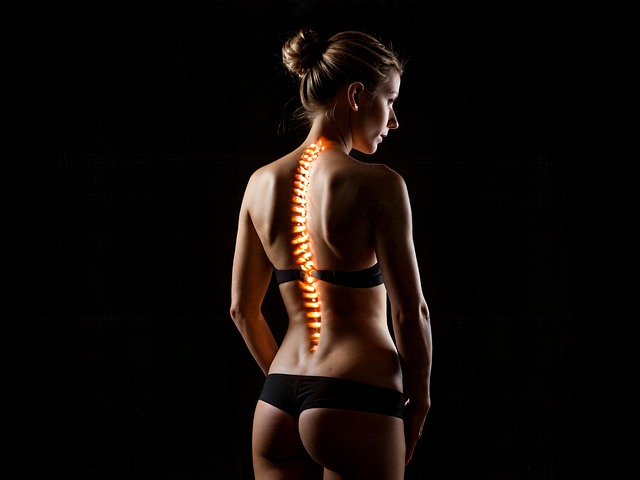Premenstrual Syndrome (PMS) symptoms can be naturally managed through cold therapy, such as cold water immersions in cold plunges. Cold exposure helps regulate the hypothalamus, balancing hormones and reducing stress hormones like cortisol. Techniques like cold plunges for hormonal balance and cold water immersion for stress hormone reduction offer a promising natural approach to managing PMS and enhancing endocrine health by promoting better hormone regulation.
Experience the power of nature’s remedy for managing Premenstrual Syndrome (PMS) and menstrual hormone fluctuations with cold plunges. This ancient practice is gaining modern popularity as a holistic approach to enhancing endocrine health. Cold water therapy has been shown to regulate hormones, reduce stress, and promote overall well-being. Discover how immersing yourself in cold water can be a game-changer for balancing your hormones and alleviating PMS symptoms. From understanding the science behind hormone fluctuations to exploring the benefits of cold exposure, this guide offers valuable insights into reclaiming your menstrual health.
Understanding PMS and Menstrual Hormone Fluctuations
Many women experience premenstrual syndrome (PMS) symptoms, which can include mood swings, bloating, and irritability due to hormonal fluctuations. The menstrual cycle involves a complex interplay of hormones that prepare the body for potential pregnancy. This natural process, while essential for reproduction, can sometimes lead to uncomfortable side effects as hormone levels rise and fall.
Cold therapy, such as cold water immersion through cold plunges, is emerging as a promising tool for managing these hormonal fluctuations. Exposure to cold water helps regulate the hypothalamus, which plays a key role in controlling the endocrine system. By stimulating this area, cold water therapy can boost hormonal balance, reduce stress hormones like cortisol, and potentially alleviate PMS symptoms.
What is Cold Plunge Therapy?
Cold Plunge Therapy involves immersing oneself in cold water, typically for short periods, to stimulate a range of physiological responses. This practice has gained attention for its potential benefits in managing hormonal fluctuations, particularly during Pre-Menstrual Syndrome (PMS). By exposing the body to cold, whether through immersion in an ice bath or a quick cold shower, the endocrine system is activated, leading to various positive effects.
One of the key advantages of this therapy is its impact on stress hormone reduction. Cold exposure triggers the release of endorphins and reduces cortisol levels, which are often elevated during times of stress and hormonal imbalance. This can help alleviate symptoms associated with PMS and promote overall hormonal balance. Additionally, cold plunges have been shown to enhance circulation and boost metabolic rate, contributing to a healthier endocrine system and improved hormone regulation.
Benefits of Cold Water for Endocrine Health
Cold water therapy, particularly through practices like cold plunges and water immersions, has gained attention for its potential to positively impact endocrine health. When you expose your body to cold water, whether it’s a quick dip in an ice bath or a refreshing cold shower, it triggers a series of physiological responses that can have long-lasting benefits. One of the key advantages is its effect on hormone regulation. Cold exposure stimulates the release of hormones like norepinephrine and cortisol, which play crucial roles in stress response and energy metabolism. This activation helps balance menstrual hormones and prepares your body for optimal performance during hormonal fluctuations.
Additionally, cold water immersion has been shown to reduce levels of stress hormones such as cortisol and adrenaline. By lowering these stress markers, it contributes to a calmer mind and body, which is especially beneficial during the often-stressful time of menstruation. This natural method of hormone regulation can be a game-changer for those seeking alternative ways to manage Premenstrual Syndrome (PMS) symptoms and maintain hormonal balance throughout the menstrual cycle.
How Cold Exposure Regulates Hormones
Cold exposure, especially through practices like cold plunges and water therapy, has been shown to significantly influence hormonal balance, particularly during the menstrual cycle. When your body is exposed to cold water, whether through a quick dip or an extended cold shower, it triggers a cascade of physiological responses designed to protect core body temperature. One key effect is the stimulation of the release of hormones like norepinephrine and epinephrine, commonly known as stress hormones, which prepares the body for physical activity and increases heart rate.
Interestingly, this cold exposure also leads to a decrease in other hormones, including cortisol, often referred to as the ‘stress hormone’. High cortisol levels are linked to various menstrual issues and hormonal imbalances. Regular cold water immersion can help regulate these fluctuations by promoting the production of hormones like testosterone and estrogen, which play crucial roles in reproductive health and overall endocrine balance. This natural method of hormone regulation offers a promising alternative for managing premenstrual syndrome (PMS) symptoms and maintaining optimal endocrine function.
Cold plunge therapy offers a natural and powerful way to manage premenstrual syndrome (PMS) symptoms and promote hormonal balance. By immersing oneself in cold water, the body triggers various physiological responses, including reduced stress hormone levels and enhanced hormone regulation. This ancient practice has gained modern recognition for its benefits in improving endocrine health, making it an appealing option for those seeking alternative methods to navigate menstrual fluctuations. Incorporating regular cold plunges into self-care routines can be a game-changer in supporting overall well-being during these hormonal shifts.
